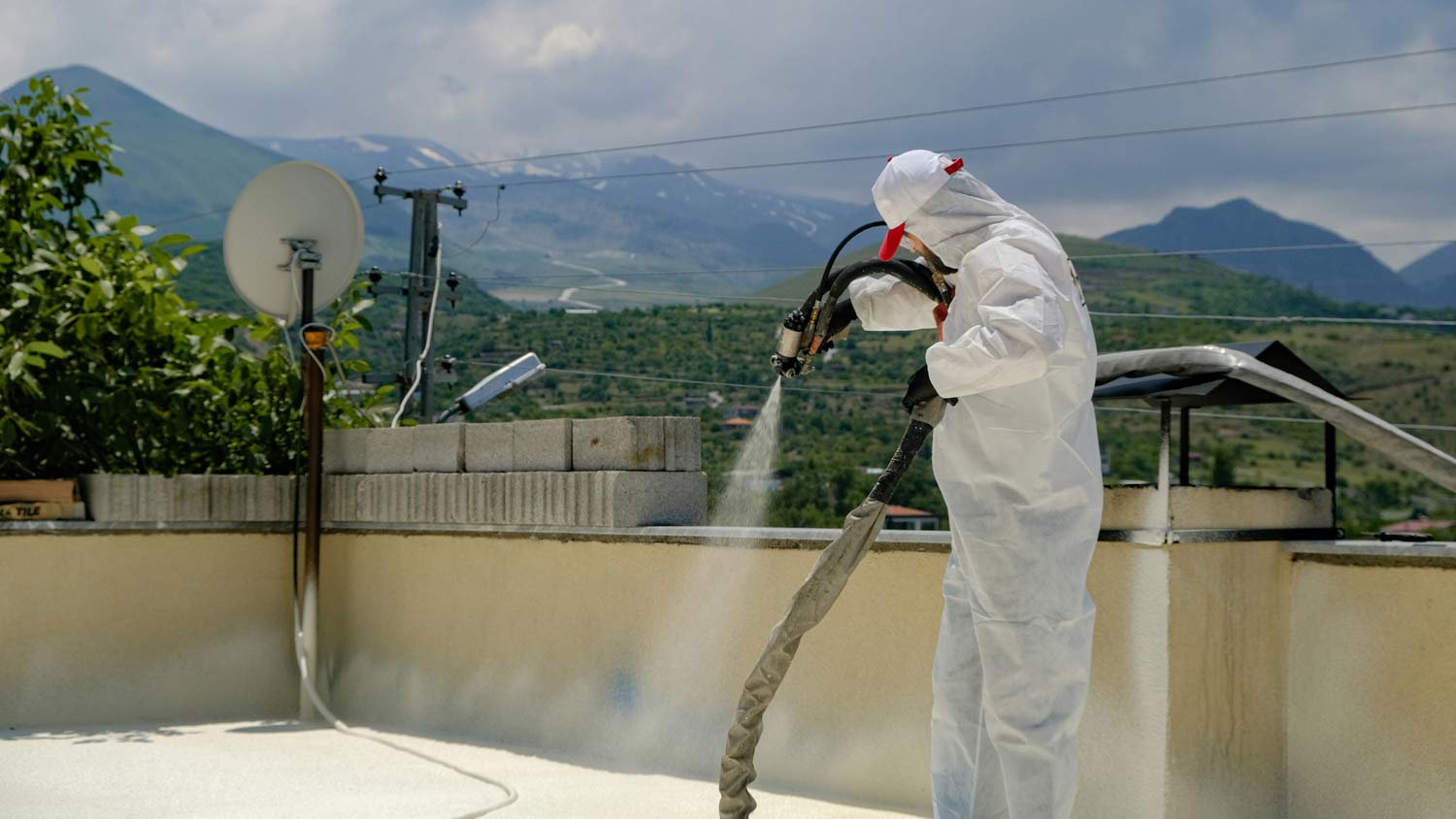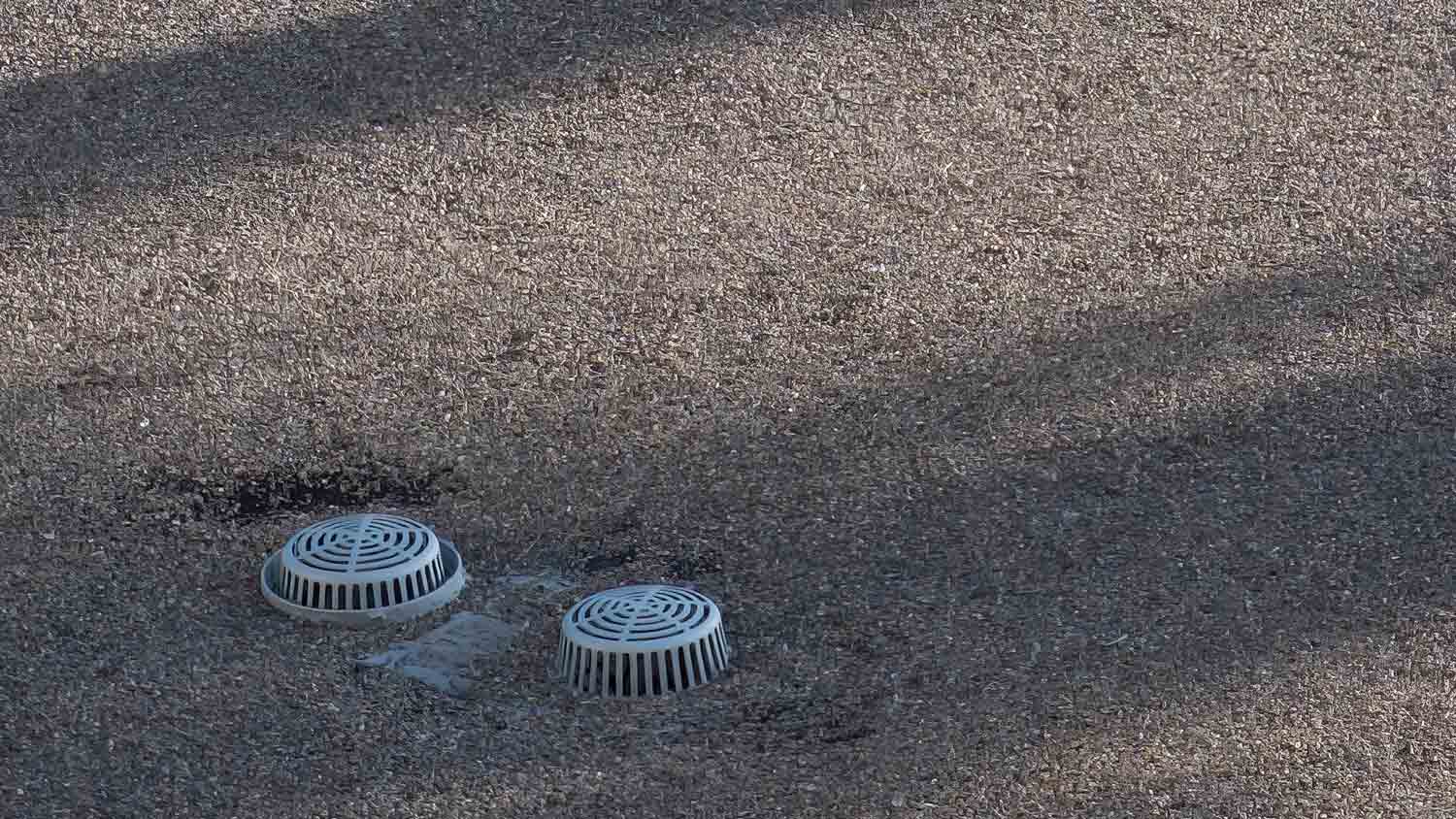
A metal roof can defend your home against Ohio’s varying weather conditions. Learn how much a metal roof costs in Columbus, OH.
Choosing between these roofing materials can be a weighty decision


Spray foam and tar and gravel are common roofing materials for flat roofs.
Foam roofs are lightweight and waterproof but need frequent maintenance.
Tar and gravel roofs are durable and low-maintenance but require reinforced support due to their weight.
If your home has a flat roof, you may be confused by the variety of choices for roofing materials. Spray foam and tar and gravel are two common roofing materials often found on commercial buildings and are becoming more popular for homes as well. Our guide breaks down the key differences between these materials, the pros and cons of each, and how they measure up in some key categories.
Foam roofs and tar and gravel are both durable roofing materials that stand up well to the elements, but they differ when it comes to weight, installation, and maintenance. Spray foam roofs are lightweight and can be easily installed by qualified professionals—although the weather conditions during installation need to be just right. Tar and gravel roofs are heavy and often require reinforced roof support, and the installation process is more complex.

A foam roof is installed by spraying a liquid across the roof’s surface, which then expands and hardens into a solid surface. A topcoat is added once the foam is dry to add UV, water, and damage protection. Spray foam roofing has its pros and cons—it’s a lightweight, cost-effective option, but there are limited qualified installers, and foam roofs require frequent maintenance.
| Pros | Cons |
|---|---|
| Lightweight | Limited installation timing |
| Waterproof | Higher maintenance |
| Good insulator | Fewer qualified installers |
Best for:
Homes in areas with heavy rainfall
Homes that can’t support a heavy roof
If you’re looking for a lightweight but durable roofing material for your flare roof, it’s hard to go wrong with spray foam. Foam roofs are waterproof when correctly installed and act as a good insulator to help keep your home energy-efficient.
Because foam can deteriorate faster than other materials, the topcoat needs to be replaced every 10 years or so, and you should inspect your roof annually for signs of damage. And while installation is fairly straightforward, there aren’t as many flat roofing professionals, so it can be challenging to find a qualified pro. You’ll also need to consider the weather during installation—this material can only be applied when it’s warmer than 50 degrees Fahrenheit.

A tar and gravel roof, also called built-up roofing (BUR), consists of alternating layers of tar or asphalt and felt or fabric. The roof is finished with a layer of gravel on top of the underlying layers. Tar and gravel roofs are extremely common on commercial buildings since concrete construction can support the extra weight of these heavy roofs.
| Pros | Cons |
|---|---|
| Durable | Heavy |
| Fire-resistant | Prone to cracking |
| Low-maintenance | Complex installation |
Best for:
Homes in areas without frequent high temperatures
Homes with reinforced support structures
Tar and gravel roofs are extremely durable and easily stand up to the elements. They’re also low-maintenance—you may need to replace loose gravel on the top layer, but these roofs need less attention than foam roofs. Tar and gravel roofs are known for their fire resistance and are beneficial in areas susceptible to wildfires.
The main drawback of a tar and gravel roof is its weight. These roofs are heavy, so they may not be suitable for homes without adequate support for the weight. They’re also prone to cracking, which can lead to leaks that may be hard to track down. Installing a tar and gravel roof should be left to the pros—the hot tar can be dangerous to work with, and the layers must be properly applied to avoid gaps or weak points.
In many cases, your home’s ability to support the roof’s weight may help you choose between a foam roof or a tar and gravel roof. If you’re still having trouble deciding between the two, see how they compare in some key categories.
Neither spray foam or tar and gravel are considered particularly aesthetic choices for roofing material, so your personal taste will dictate which looks better to you. Tar and gravel has a textured, traditional look, while spray foam has a smoother surface.
These two roofing materials are similar in initial price—a tar and gravel roof costs about $3 to $8 per square foot, and spray foam roofing costs about $2.50 to $8 per square foot—but spray foam is more energy-efficient, so it’ll save you on energy costs over time. Your flat roof replacement cost will be about the same for both materials, but spray foam will cost less in the long term.
It may be slightly more difficult to find a local roofer to install a spray foam roof, but as long as the temperature is over 50 degrees Fahrenheit, the installation process is fairly quick and easy. Installing a tar and gravel roof means working with hot tar, dealing with the material’s strong smell, and hauling heavy roofing materials up a ladder. Whichever flat roofing material you decide on, choose a roofer with extensive experience with that material so you know the job is done right.
Repairs to foam roofs and tar and gravel roofs should be performed by qualified professionals. For minor repairs, foam roofs may just need to be resprayed and resealed in the affected area. Tar and gravel roofs often only require a small amount of tar and a fresh application of gravel. For both materials, it’s important to ensure repairs are done right to avoid leaks and other damage.
When it comes to longevity, tar and gravel just beats out spray foam roofing. Tar and gravel roofs last an average of 20 to 25 years, while a spray foam roof lasts about 15 to 20 years. Both require periodic maintenance to last longer—tar and gravel roofs often need new gravel applied, and spray foam roofs need to be regularly resealed.
From average costs to expert advice, get all the answers you need to get your job done.

A metal roof can defend your home against Ohio’s varying weather conditions. Learn how much a metal roof costs in Columbus, OH.

Learn about roof replacement costs in Columbus and what factors are at play to budget accurately and make sure you’re getting a fair price.

Dealing with a visibly damaged roof or leak? Learn about roof repair costs in Columbus to see how much you’ll need to budget for a permanent solution.

Shingles that are losing their granules may not be protecting your roof. Learn why shingle granule loss happens and what it means for your roof.

Dormer additions are both stylish and practical. Check out how to increase your attic's living space while boosting your home's curb appeal.

A bad roofing job can compromise the safety of your house. Learn the signs of a bad roofing job so you can nip issues in the bud.